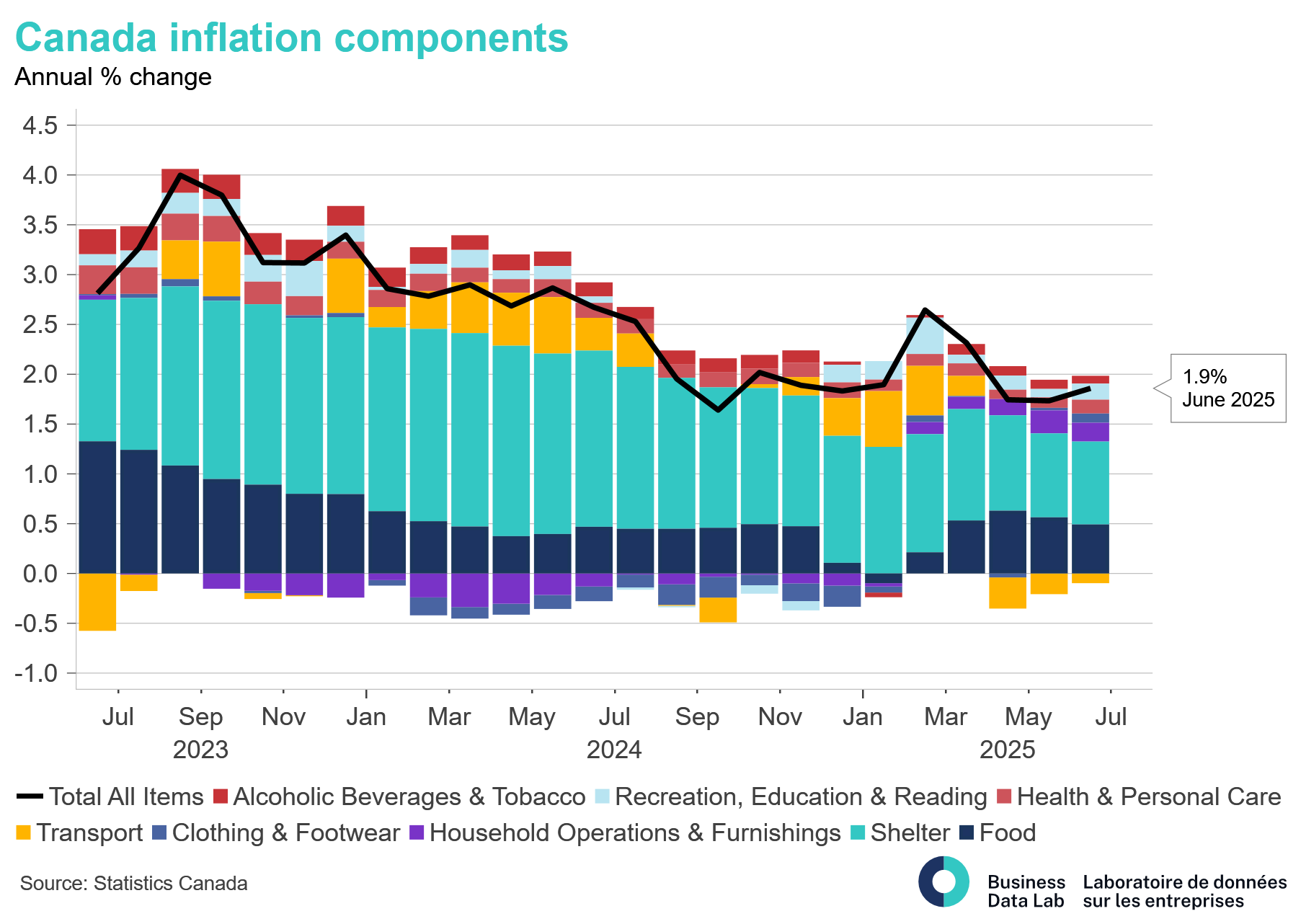Blog /
June 2025 CPI: Base-effects bring inflation up to 1.9%, with underlying price pressures mounting.
Canada’s inflation rose from 1.7% in May to 1.9% in June, as base-effects from lower gasoline prices and higher vehicle prices lead the increase in June. Overall, prices are trending higher and excluding indirect taxes (i.e. carbon tax), inflation is now at 2.5%.



Andrew DiCapua
“Price pressures edged higher as goods inflation picked up again. While the jump was mostly brought on by base effects from gasoline prices, underlying inflation remains stubborn. Seasonal dynamics seen in vehicle sales also helped keep inflation higher. This will weigh heavily on the Bank of Canada, especially as retaliatory tariffs begin to feed through and businesses warn of rising consumer prices. Despite recent economic data presenting a weaker outlook, our call is for a hold on the policy rate at the next Bank of Canada meeting.”
Summary
- Canada’s inflation rose from 1.7% in May to 1.9% in June, as base-effects from lower gasoline prices and higher vehicle prices lead the increase in June. Overall, prices are trending higher and excluding indirect taxes (i.e. carbon tax), inflation is now at 2.5%.
- Core inflation measures moved higher to 3.1%, marking the third month with core measures at the top of the Bank of Canada’s 1-3% target range. Core momentum on a 3-month moving average is also running above 3%, indicating persistent core inflation.
CPI Breakdown
- Gasoline prices were unchanged in June but down 13% on an annual basis, following a larger decline in May (-16%). Base-effects from last year couldn’t keep prices down as much compared to last month. Excluding gasoline, annual inflation held steady at 2.5%.
- Goods inflation is making a comeback, with durable and semi-durable goods showing consistent price pressures for some products, which could indicate that retaliatory tariffs are starting to bite. Specifically, products like clothing and household appliances are experiencing seasonally higher prices amid tariffs.
- Services inflation continues to be running near the top of the Bank’s target range. Wages continue to moderate and slack is building in the labour market, which should keep fears around sticky services inflation at bay.
Provincial Trends
- Inflation accelerated in eight provinces in June. Quebec inflation the most of any province, rising by 0.5% to 2.2%. British Columbia experience slower price growth, with inflation down 0.2% to 2.1%.
Implications
- Headline inflation is showing underlying price pressures are building even though economic activity has been choppy. Canada’s retaliatory tariffs are likely showing up in the data as goods inflation rebounds. There remains an upside risk to inflation so long as an agreement with the U.S. is not reached and retaliatory tariffs are in place.
- Inflation was in line with economists’ expectations. Market participants were anticipating the Bank of Canada to hold interest rates in advance, but have further trimmed the probability of a rate cut in July to just 10%.
- We continue to expect the Bank of Canada to hold interest rates at its July meeting. A positive surprise in the employment picture for June (with 83k job gains), and a higher inflation reading will leave the Bank to wait to see how inflation is unfolding.



Sources: Statistics Canada; Canadian Chamber of Commerce Business Data Lab
Other Blogs

Sep 19, 2025
Retail Sales July 2025: Cautious consumers slow spending in summer

Sep 17, 2025
We’re here to help: The Bank of Canada pivots to supporting economic growth, following second quarter contraction.

Sep 16, 2025






